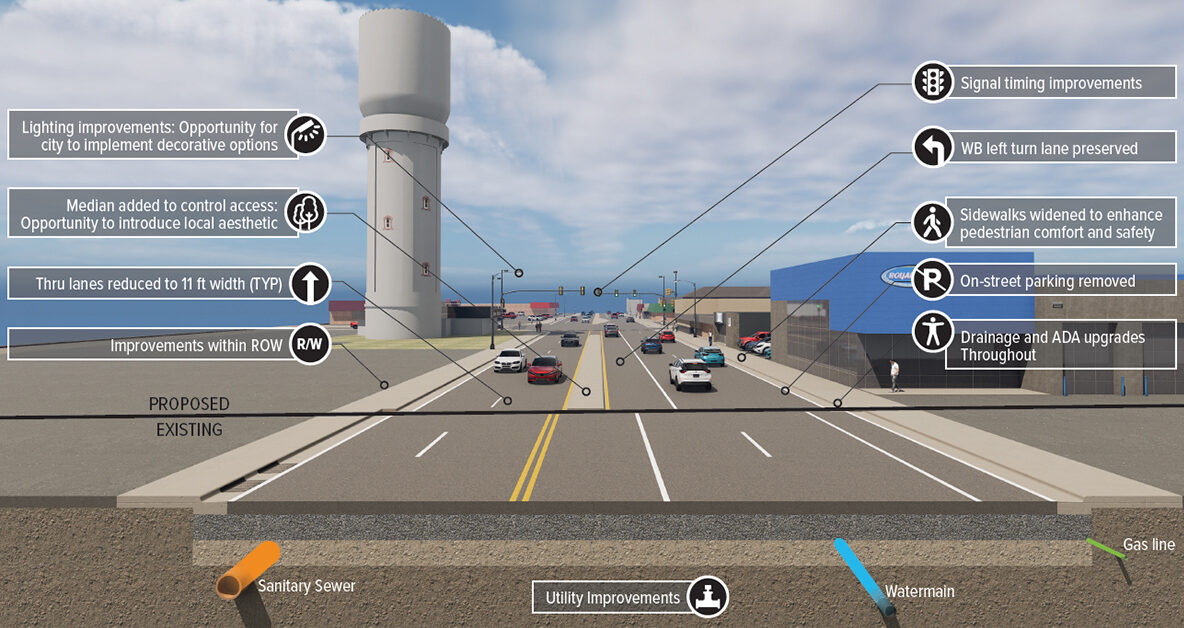3D Modeling Engineering
It’s no secret that innovation drives progress in civil engineering, emphasizing the importance of staying at the forefront of technological advancements. One such advancement is 3D modeling, which has reshaped the way professionals conceptualize, design, and manage civil engineering projects.
3D modeling is a digital technique that allows engineers to create three-dimensional representations of objects or structures. These digital models are not mere static images; they provide a lifelike, interactive, and immersive experience.
3D modeling can play a critical role throughout the various stages of civil engineering projects, from conceptualization to completion.
Methods of 3D Modeling
3D modeling enables engineers and designers to create detailed digital representations of objects, structures, and landscapes. These models are constructed using various techniques, each with its own unique approach and application. Below are the top three widely used 3D modeling methods:
Wireframe Modeling: Considered the most basic form of 3D modeling, wireframe modeling outlines the shape and structure of an object, similar to the skeletal framework of a building. These models are commonly used during the initial stages of a project for quick visualization and ideation.
Surface Modeling: This 3D modeling technique takes it to the next level by introducing surfaces to the wireframe structure. These surfaces are defined by their boundaries and can be controlled in terms of curvature and smoothness. Surface modeling allows for the creation of more realistic and visually appealing representations.
Solid Modeling: This is the most advanced and comprehensive form of 3D modeling, representing objects as fully enclosed, solid volumes. Unlike surface models, solid models define not only the outer surfaces but also the interior of the object. This means that solid models can be used for precise analysis, such as determining volume, weight, or stress distribution.
Benefits of 3D Modeling
3D modeling offers a wide range of advantages throughout the project lifecycle that enhance overall efficiency, accuracy, and success. Here are the key benefits of 3D modeling in civil engineering:
Improved Design Visualization: 3D models allow for precise and accurate representations of complex structures. Engineers and stakeholders can view projects from various angles and perspectives, gaining a clear understanding of the final product long before construction begins.
Enhanced Team Collaboration: Engineers, architects, and contractors can work together more effectively by visualizing the project in 3D. This collaborative environment fosters better communication and problem-solving, reducing conflicts and delays.
Effective Project Cost Estimation: Accurate 3D models enable precise cost estimations. Engineers can calculate materials, labor, and equipment requirements more reliably, leading to more accurate project budgets and cost control.
Safety Analysis: 3D models can be used to assess safety protocols and potential hazards on construction sites. By identifying and addressing safety concerns beforehand, projects can be executed with a stronger emphasis on worker safety.
Efficient Infrastructure Management: Once construction is complete, 3D models can be utilized for infrastructure management. They provide valuable data for maintenance, repairs, and rehabilitations, ensuring the longevity and optimal functioning of the infrastructure.
Environment-friendly Design: Engineers can analyze the environmental impact of their projects, optimize resource usage, and explore sustainable design alternatives. This results in more eco-friendly construction practices and reduced long-term environmental effects.
Get Started with SRF Consulting
3D modeling has transformed the way projects are conceptualized, designed, and administered. This technology empowers engineers and designers to push the boundaries of creativity and accuracy, ensuring that civil engineering projects are not only functional but also sustainable.
As a leading consulting firm committed to improving the future of public and private infrastructure systems, SRF Consulting stands ready to collaborate with you. Contact us today to learn about the possibilities of technology in your civil engineering projects.
Frequently Asked Questions (FAQ)
Q: What is 3D modeling in civil engineering?
A: 3D modeling in civil engineering refers to the digital representation of objects, structures, and landscapes using three-dimensional models. It allows engineers and designers to create detailed and accurate visualizations of projects, facilitating better planning, design, and execution of infrastructure and construction projects.
Q: How does 3D modeling benefit infrastructure design?
A: 3D modeling offers several benefits in infrastructure design, including improved design visualization and enhanced accuracy. These advantages result in more cost-effective, sustainable, and safe infrastructure projects.

